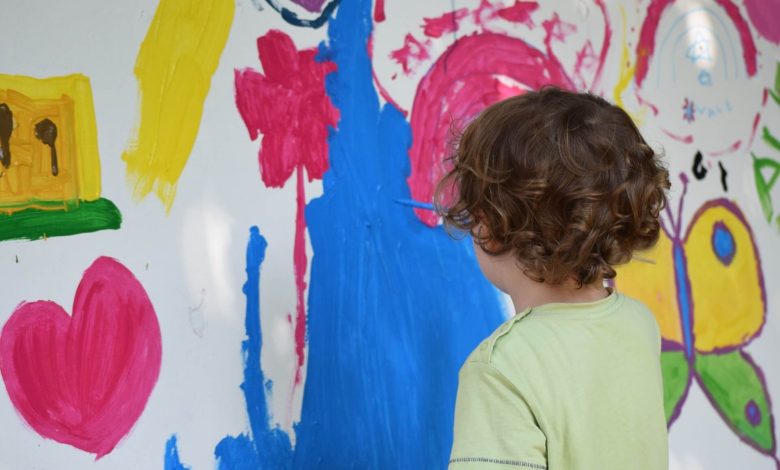What is Awareness-Based Art Therapy (MBAT)? What are the Areas of Use?

Mindfulness-based art therapy is a relatively new concept. Unlike art therapy, this form of therapy is a therapy where mindfulness and art therapy are combined. This concept was first mentioned by psychologist and author Laury Rappaport in 2009, in the book Awareness and Art Therapies. In its simplest sense, MBAT combines the benefits of mindfulness training (eg meditation) within an art therapy framework. In this article, there is information about what mindfulness-based art therapy is and its usage areas.
Awareness-Based Art Therapy (MBAT) Definition
There are several components involved in creating the mindfulness-based concept of art therapy. These are as follows:
Awareness
The concept of awareness originated from Buddhist practice and reflects a focus on awareness of emotions, physical sensations in the body, and consciousness. When he is mindful, he has an advanced ability in terms of self-awareness, experiences and the capacity to reflect on daily life.
Art Therapy
Art therapy first became popular in the 1940s as a method of using art as an approach to therapy or as part of psychotherapy. To give an example to understand what this means; In art technique as therapy, art is created as a client, a way of identifying and releasing feelings held within. Someone who is a therapist in art psychotherapy analyzes the art created to develop insight into psychological problems and emotions.
Mindfulness-Based Stress Reduction
Mindfulness-based stress reduction (MBSR), a pioneer of mindfulness-based art therapy, is used to help clients approach situations from a place of acceptance and awareness. In this way, MBSR is a technique developed for understanding inner self and emotions. MBSR makes use of techniques such as body scanning and meditation.
Awareness-Based Art Therapy
Combining mindfulness concepts with art therapy results in therapeutic treatment known as mindfulness-based art therapy, as first proposed by Rappaport. This treatment combines mindfulness philosophy in an art therapy setting. In other words, one gets involved in the creative process of making art (consciously) as a way of discovering oneself.
MBAT has gradually been recognized as a tool for improvement in the field of psychology, but research-based evidence is still lacking, especially in studies with both treatment and control groups (to confirm that MBAT is better than a placebo treatment). Another name for mindfulness-based art therapy is “focus focused art therapy”, which reflects the emphasis on focus shift as part of the experience.
Rappaport combined the work of the focus theory of psychotherapist Eugene Gendlin in proposing the MBAT concept. Gendlin noticed that clients who show the most improvement in therapy are those associated with their inner physical selves. In essence, mindfulness-based art therapy connects the imagination to the body and enables the expression of emotions that cannot be expressed in words.
Benefits of Mindfulness-Based Art Therapy (MBAT)
Numerous benefits of mindfulness-based art therapy have been identified through experimental research. Some promising psychological problems in terms of their responses to MBAT include (especially in people with combined physical illnesses):
- Anxiety disorders
- Eating disorders
- Poor substance use (relapse prevention)
- Depressive disorders
- Stress-related issues
- Problems with anger
Usually MBAT is used in people with physical illnesses to address psychological concerns, including coronary artery disease (CAH) and different types of cancer. Mindfulness-based art therapy for these individuals can help reduce distress levels and improve quality of life. Some of the specific psychological benefits of MBAT shown in the literature are:
- Improving psychological stability
- Improving quality of life (QoL)
- Changes in brain patterns that reflect a calm, focused state of attention
- Thicker and more developed areas of gray matter in the brain
- The development of neural pathways in the brain that allow art to be created and focused
- It prevents the decrease in awareness at the time of psychological distress.
- Increase in emotional awareness
- Increased sense of control and ability to share inner thoughts
- Enhanced awareness of key hidden issues
- the ability to convey abstract emotions
- Increased self-esteem and self-acceptance
- Increased attention span
Finally, mindfulness-based art therapy is useful because it can be easier to practice than attend psychotherapy appointments (in the case of self-help MBAT). Meditation, like many forms of art-based mindfulness, can be practiced at home on your own. While this does not replace interaction with a therapist, there are many cost-effective ways to apply MBAT in everyday life to combat stress and manage psychological difficulties.
Examples of Awareness-Based Art Therapy (MBAT)
In practice, although MBAT is usually practiced in a therapy setting, it is possible to practice most of these activities at home. It is necessary to have knowledge about some mindfulness-based art therapy techniques to give an idea. MBAT can be a fun way to develop greater awareness of life, even if it’s just done at home on your own. Implementing a practice that integrates mindfulness and art for an hour a week will likely provide noticeable benefits to psychological health. Some of the techniques of this therapy are as follows:
• Drawing one’s own profile: This is the exercise of one’s self-acceptance. It should try to define its profile as realistically as possible and the defects identified in the picture should be accepted.
• Examining art materials carefully: Art should be studied carefully, using all five senses. What do you see, feel, touch, hear, taste? Engage with sensory stimulation and responses to all forms of art in daily life should be monitored.
• Using art to express emotions: While painting, shaping, drawing or creating art in any other way, the emotions and feelings experienced by the body should be tried to be channeled. Any physical feeling felt while drawing or coloring should be observed. Happy or stressful events spent during the week should be articulated.
• Paying attention to the levels of pain: If he is living with chronic pain due to a physical illness, attention should be paid to how his pain levels change while doing the arts.
• Producing simple artistic content: In this therapy, it should not necessarily be attempted to produce meaningful fine art works. For example, art can be created by painting the soles of the feet and walking on paper.
• Collage creation: A collage can be created expressing emotions.
• Evaluating before and after therapy: To see if there is improvement in psychological health after this therapy, the person needs to evaluate how they are feeling.
Use of Awareness-Based Art Therapy (MBAT) with Children
Mindfulness-based art therapy has been used in children who have experienced trauma or a physical illness and were hospitalized. For example, children may be asked to imagine the future or to share how they feel. When used with children, MBAT has been shown to increase self-awareness, endurance and self-compassion.
Alternative Approaches in Awareness-Based Art Therapy (MBAT)
In addition to traditional art making, it may include mindfulness-based art therapy, drama therapy, and music therapy. These MBAT formats use art to transform emotions and improve relaxation. For example, children can learn to participate in awareness by watching a play with physical illnesses, actors’ instructions to breathe and visualize.
In Palliative Care and Awareness-Based Art Therapy (MBAT)
For patients approaching the end of life, mindfulness-based art therapy can help connect with spirituality, meaning in life, faith, and peace. While MBAT cannot help reduce the physical symptoms of the disease, it can be useful in improving emotional well-being and psychological strength in times of distress, reflecting the goals of palliative care.
As a result; Mindfulness-based art therapy combines mindfulness and art to offer a method to help manage psychological problems, especially among those who experience physical illness or other problems such as end-of-life anxiety. If the person himself or a loved one is struggling with these types of problems, MBAT, offered by a psychotherapist or other mental health professional, or administered at home on your own, can help improve quality of life and overall psychological health.





